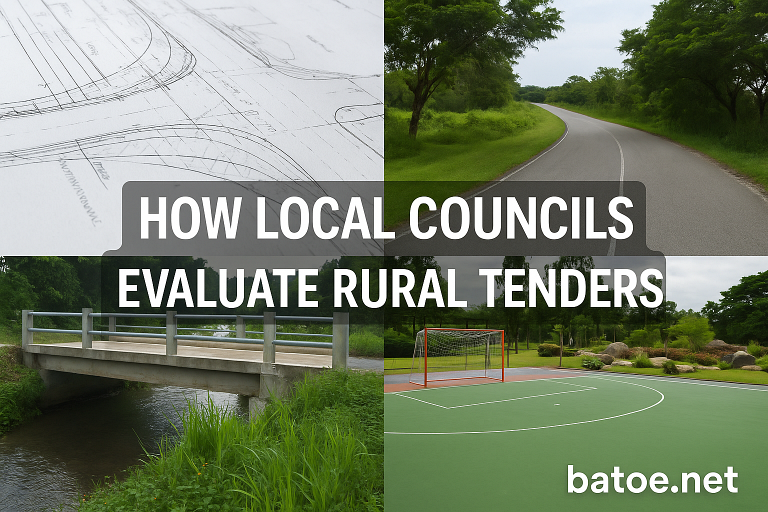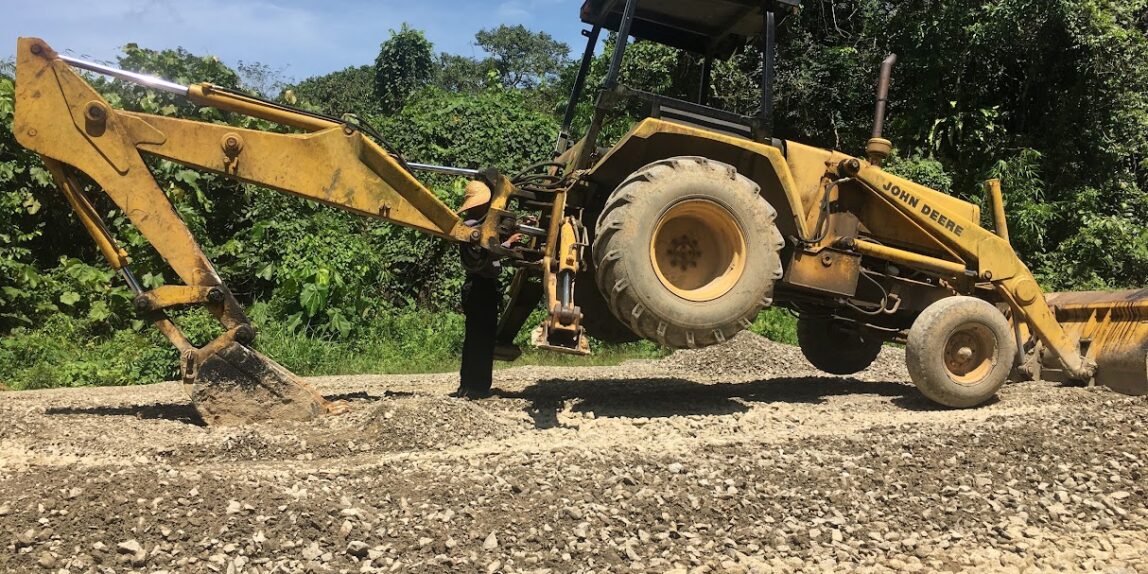In most small districts across Sarawak, projects may appear simple — a short stretch of road, a small bridge, or a futsal court — but behind each one lies a lengthy process of planning, tendering, and selection.
As someone who’s been involved in local development matters, I can tell you that every tender, no matter how small, is a mini-story of its own — involving technical, financial, and social considerations.
Let’s take Bau District as an example. Recently, several small- to medium-scale tenders were opened for public bidding — including road upgrades, market stalls, and beautification works.
Most of them fall under UPKJ Class E (G2) and Class F (G1) — meaning project values are typically below RM500 k and RM200 k respectively.
🚜 1. Road Upgrading Projects (Class E)
Rural road upgrading sounds easy — tar the surface, done. But in reality, terrain and drainage are the biggest challenges.
Some roads serve cultural or tourism sites, so the quality standard must be higher.
If the contractor cuts corners on compaction or slope, you’ll see cracks within months — and the public will notice fast.
The council usually checks not only the price but also experience, machinery ownership, and manpower capacity.
Small contractors sometimes bid for three or four projects at once — so the risk of overstretching is always discussed during the evaluation process.
🏠 2. Kampung Access Roads (Phase 2 Works)
For kampung roads, the continuity from Phase 1 to Phase 2 matters.
You can’t have half the road wide and the other half narrow.
The evaluation focuses on whether the contractor understands drainage flow, soil type, and connection to existing works.
Even small inconsistencies can become public complaints later.

⚽ 3. Futsal and Recreational Upgrades (Class F)
These are small but very visible projects.
Youth facilities like futsal courts are the first to get social-media attention — good or bad.
So drainage, surface flatness, and lighting are not minor details.
Some contractors think “RM150 k job only,” but if it floods or cracks, the public will judge the council, not the builder.
Lesson to learn here that the issue might pop up in the future: small project, big impression.
🌉 4. Small Bridge Upgrading
Even a short bridge requires proper foundation and wing walls.
If the abutment uses loose backfill, it’ll sink or wash out within a year.
(An abutment is the structural support at the ends of a bridge that transfers the bridge’s weight to the ground)
During evaluation, we look for contractors with real civil works experience, not just general construction.
The wrong design or culvert size can cause flooding — a headache for everyone downstream.
🗑️ 5. Solid-Waste or Dumping-Ground Improvement
Anything related to waste management is sensitive.
Besides engineering, there’s environmental responsibility — drainage to prevent leachate, fencing, access control, and slope stability.
( Leachate is a contaminated liquid formed when water filters through solid waste)
Public Health officers usually cross-check these items because once completed, the site affects the whole community’s cleanliness.
🧺 6. Public Market (Gerai Tani) Upgrading
Market projects involve traders and daily users, so work must be planned with minimal disruption. This is crucial as those traders are mostly Kais Pagi makana Pagi dan kais Petang makan Petang.
The main focus is drainage, roofing, stall layout, and electrical safety.
Public complaints about leaking roofs or uneven stalls can turn political quickly — so quality control is crucial. A reminder to traders to keep their place managed and clean is also crucial.
🌳 7. Beautification & Landscape Works (Rock Garden)
“Design & Build” landscape projects are creative but tricky.
Because the contractor handles both design and execution, the evaluation must balance aesthetics and practicality.
Plant choices, maintenance, and irrigation matter more than people think — without proper upkeep, the garden can turn into a wild patch in a few months.
In the public eye, these are the projects that reflect the town’s image, so even a small mistake becomes obvious. Plus nowadays, even the smallest of issues affecting someone will get published onto social media.
⚖️ The Bigger Picture
Tender evaluation isn’t just about picking the lowest bidder, sometimes and not all the time.
It’s about balancing technical capability, fair pricing, and long-term reliability.
The system exists to make sure every ringgit spent benefits the public, not is wasted on repeated repairs.
At the end of the day, every road, stall, or futsal court represents the council’s promise to improve lives — and that’s why evaluation meetings matter.
✍️ Personal Reflection
As someone observing this process closely, I’ve learned that transparency doesn’t mean leaking confidential details — it means helping the public understand how things work and why quality matters.
Each small project tells a bigger story about local governance, teamwork, and responsibility.
